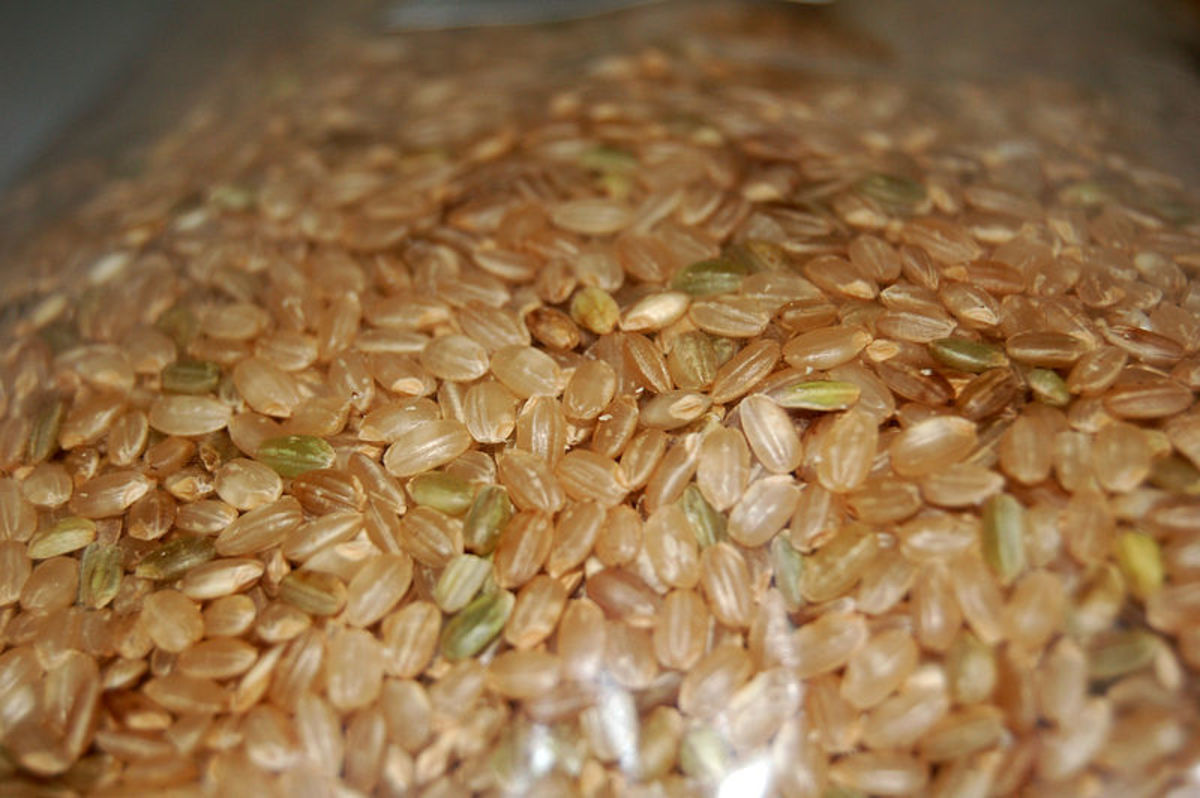Basil: Legends, Varieties and Uses
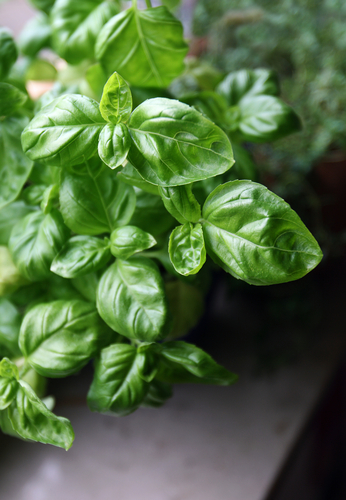
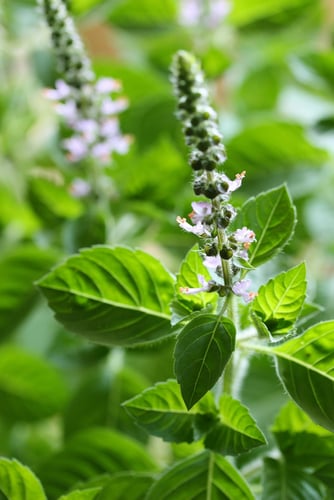
If emotional baggage comes with names, the highly strung, almost neurotic, temperament of Basil in the television series Fawlty Towers is understandable. The herb of the same name has had a rocky history: revered, feared, abused; associated with death, mourning and love.
Of more than 150 species of basil, sweet basil (Ocimum basilicum ) is the best known and most widely used in cooking. Sweet basil is believed to have been introduced from its native India to Ancient Greece by Alexander the Great. From there it spread through the Mediterranean, the Romans adopting it with such passion that the herb remains strongly associated with Italy to this day.
Its name comes from the Greek word basilokon meaning "royal", a possible carryover from its revered status in India, although it is actually O. sanctum (commonly known as holy basil) that is the sacred herb associated with Vishnu and Krishna and planted around temples.
Basil was so revered in ancient civilisations that it could be gathered only by kings or priests and could not be cut with anything less than a golden sickle. Even today, Italian tradition requires that basil be torn or pounded (for pesto), never cut with a knife as the metal is said to cause a reaction that alters its flavour. It is said to have been found growing around Christ's tomb after the Resurrection and is used in Greek Orthodox churches to prepare holy water.

A Herb of Mixed Emotions
In the midst of such reverence, it also became known as the "devil plant". The ancient Greeks and Romans believed that basil would not flourish unless unprintable abuse was hurled at it. This gave rise to the French idiom semer le basilic ("sowing the basil") for "raving".
Basil inspired fear through the belief that it was able to breed the basilisk, a mythical dragon-like creature that could kill with a glance or a breath. (An alternative belief was that it offered protection against this monster.) An anecdote attributed to the 17th century botanist Tournefort is that a nest of scorpions was found in the brain of a gentleman of Siena who went mad and died after snorting dried basil as snuff.
Such horrific tales didn't diminish its reputation as a penis-enlarging aphrodisiac and love charm. In old Italian tradition, a pot of basil outside the door signified a woman's willingness to receive a suitor, while in Spain, pots of basil in windows or on balconies signify a house of ill repute. In rural Mexico, it was believed that basil in the pocket would reclaim a lover's roving eye.
A symbol of mourning in Ancient Greece, basil still features in Indian funerals. The Egyptians used it in embalming.
Caprese Salad
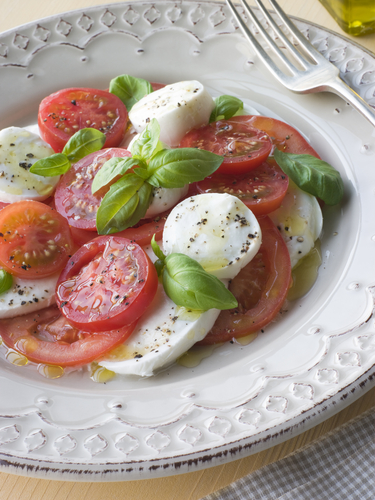
Types of Basil
There is a mouth-watering world of basil beyond the common sweet variety. In good seed catalogues, you will find in excess of 20 basils including anise, cinnamon (from Mexico), and lime (wonderful with seafood). Easy and quick to grow, they thrive in pots on sunny balconies or window sills and are excellent companion plants for roses and tomatoes.
Basil's harmonious relationship with tomatoes continues in the kitchen. Caprese salad exemplifies perfection in simplicity: the combination of fresh mozzarella, sun ripened tomatoes and freshly picked basil requires nothing more than a drizzle of extra virgin olive oil, salt and freshly ground black pepper.
The mellow, rich-flavoured Napoletano basil adds soft aniseed flavour to any dish
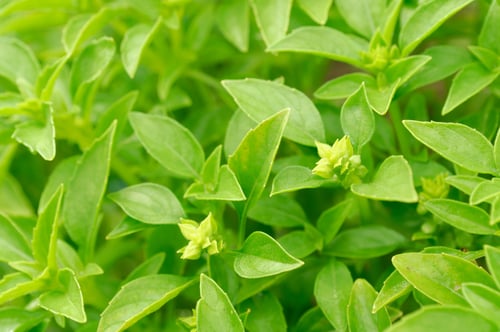
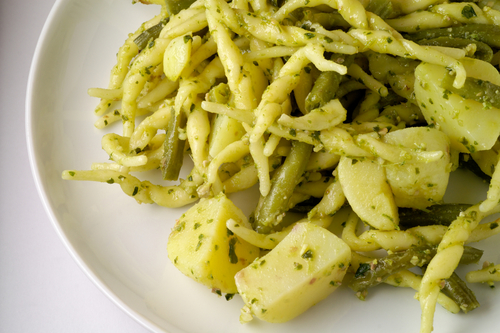
Regional Pesto
Sweet, fragrant Genovese basil is widely used throughout Italy for making pesto but the intensely flavoured, small-leaved Fino Verde (not to be confused with the Greek basil) is considered by purists to make the finest version. It's actually quite painstaking work picking the tiny leaves but you will be well-rewarded by the most amazing flavour and aroma of the resultant pesto.
Pesto is a traditional sauce of Liguria and there are two versions of this sauce within Liguria itself: one that includes pinenuts (pesto di Levante ) and one without pinenuts (pesto di Ponente ). The latter is particular to Genoa whilst the former is the predominant version from Nervi (a district of Genoa) through to the Sestri Levante. The cheese for a traditional pesto must be either Parmigiano-Reggiano or Pecorino Sardo (Sardinian pecorino). Anything else would be regarded as heresy.
The pasta types used for pesto are trenette, trofie, potato gnocchi and lasagne. It is also used for Genovese minestrone.
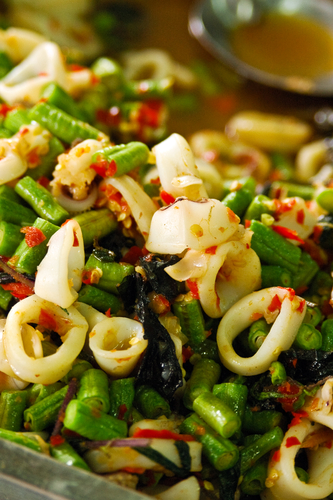
Asian Basil Varieties & Use
The three main basils used in Asian - primarily Thai, Vietnamese and Laotian - cuisines differ significantly in flavours from European varieties. Pungent, aniseedy Thai basil features in red and green Thai curries. It is invariably forms a part of the fabulous fresh herb and salads that are a veritable fixture at any Vietnamese meal. Thai basil adds a lively green touch to pho (Vietnamese rice noodle soup which has many regional variations).
A red-and-green-leaved variant of strongly flavoured hot or sacred basil is used for stir-fries or other full-flavoured dishes. Fabulous, in-your-face, citrus-pungent lemon basil is used with dill for meat dishes in Laotian cuisine and for soups and salads in Thai cookery
STIR FRIED CHICKEN WITH LEMON BASIL
The citrusy scent and flavour of lemon basil makes a very versatile herb. Grow some in the herb patch or in pots to have on hand to liven up any stir fry dishes. If you don't have any on hand at the moment, just add kaffir lime leaves (another plant that's easy to grow in a pot!) or some lemon zest.
500g boneless chicken flesh, diced into 2cm cubes
1 x 425 g can straw mushrooms, rinsed and drained
1 tbsp ginger, chopped finely
3 cloves garlic, minced finely
1 tbsp oyster sauce
1 tbsp fish sauce, or to taste
shake of ground white pepper
pinch of sugar
1 fresh chilli, sliced finely
40 leaves fresh lemon basil or common sweet basil
6 kaffir lime leaves, snipped finely (only if using common sweet basil)
2 - 3 tbsp oil for stir-frying
Heat wok over high heat. Add oil. Fry ginger, garlic and kaffir lime leaves (if using) until ginger and garlic are golden. Add diced chicken. Fry for a few minutes until almost cooked. Add straw mushrooms, oyster sauce, fish sauce, pepper, sugar and chilli. Toss until well combined and chicken is cooked.
Remove from heat and toss basil through. Serve immediately with steamed rice and a vegetable dish.





